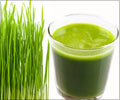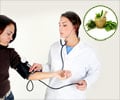Unlock the power of steam therapy with a DIY guide and insights into vaporizers. Discover herbs that enhance respiratory health and sleep.
- Follow a 6-step process for effective steam inhalation at home, but avoid using this method for children under 12
- Utilize portable vaporizers to inhale steam, aiding in conditions like nasal congestion, flu, and allergies
- Incorporate herbs like thyme, mint, eucalyptus, basil, and rosemary to amplify the benefits of steam therapy for respiratory and sleep issues
Effects of steam inhalation on nasal patency and nasal symptoms in patients with the common cold
Go to source). There are different methods for inhaling steam, which is made by heating water with various herbs and then breathing in the steam that is released.
DIY Steam Inhalation Process
A do-it-yourself therapy is the most popular way of steam inhalation. Lynn Gershan, M.D., a trained medical herbalist and pediatrician at the University of Minnesota Medical School, reveals her 6-step DIY process:- Fill a kettle with two-quarters of water.
- Heat the water until it is steaming but not boiling.
- Allow two handfuls of herbs to soak in water for 10 minutes.
- To inhale the steam, make a tent with a towel over your head.
- Allow no more than 10 minutes to inhale the steam.
- After you have finished, leave the decoction, or extract, of water and herbs on your counter for a few hours. The herbs have become more concentrated at this point, and the chemicals released into the air by their essential oils can be left to evaporate in the air, where they can continue to refresh you and your environment. After a few hours, you can discard the liquid.
Steam inhalation and paediatric burns during the COVID-19 pandemic
Go to source).
Vaporizers for Steam Inhalation
Inhaling steam from bathtubs, showers, and steam rooms is another way of steam therapy. Portable steam inhalers, commonly known as vaporizers, have grown in popularity in recent years. "I recommend them to many of my patients, and you can get one cheaply on Amazon," says ENT specialist and head and neck surgeon Jacqueline Jones, M.D.To use a vaporizer, fill it up to the fill line with water (filtered water is best), plug it in, and turn it on. The water is progressively heated until it boils, and the steam produced passes through the hole in the vaporizer, where it can be inhaled.
Some vaporizers contain essential oil chambers, or you can add the oil to the water. Jones recommends beginning with two drops of essential oils and stopping when you can smell them in the steam. She also suggests using a sterile nasal saline solution after steam therapy to clean up the loosened secretions.
After each usage, make sure to clean portable steam inhalers. Otherwise, they may become moldy, which can irritate noses, throats, and lungs. They can also harbor bacteria and viruses, which can lead to infection if not cleaned properly.
Diseases and Conditions That Can be Treated With Steam Inhalation
"I advise my patients with blocked nasal passages and nasal congestion to use steam inhalation." The flu, seasonal colds, sinus infections, and allergies are common triggers," says Jay Woody, M.D., emergency room physician and Intuitive Health's chief medical officer.Steam therapy is occasionally used to aid with chest congestion in addition to clearing the nose and throat (3✔ ✔Trusted Source
Steam inhalation in respiratory illnesses--full steam ahead or full stop? A systematic review of randomized controlled trial
Go to source). In a 2018 trial on steam therapy with a small sample of persons with chronic obstructive pulmonary disease (COPD), for example, some participants observed reduced respiratory rate and easier breathing (4✔ ✔Trusted Source
The Effects of a Warmed Steam Inhalation on Patients with Chronic Obstructive Pulmonary Disease: A Cross-Sectional, Controlled Study
Go to source).
More research is needed, however, to assess the impact of steam therapy on persons with lung problems. Gershan also cautions that steam therapy should not be used in place of authorized drugs in persons with respiratory issues. Some people may be sensitive to herbals, which may cause airway difficulties.
Steam therapy may also aid in sleep. A 2019 study found that inhaling heated steam before bedtime helped participants relax and enhance deep sleep, resulting in better sleep quality in adult men with modest sleep difficulties and anxiety (5✔ ✔Trusted Source
Warm Steam Inhalation before Bedtime Improved Sleep Quality in Adult Men
Go to source).
Herbs that are Best for Inhaling Steam
Many herbs can help to enhance the benefits of steam therapy. Here are five popular alternatives:Thyme:
It is an expectorant (it helps loosen mucus) with antimicrobial effects (6✔ ✔Trusted SourceThymol and Thyme Essential Oil-New Insights into Selected Therapeutic Applications
Go to source). "It's my favorite essential oil for steam therapy because it has great benefits, and it's not an irritant like some stronger oils can be," Jones said.
Mint Leaves:
Mint leaves have a nice scent, helps loosen mucus and is also antibacterial (7✔ ✔Trusted SourceTheoretical effectiveness of steam inhalation against SARS-CoV-2 infection: updates on clinical trials, mechanism of actions, and traditional approaches
Go to source). Gershan warns against using peppermint essential oil for steam therapy because it is extremely potent. Spearmint oil in vaporizers might be a better option.
Eucalyptus:
Remember when your mother used to put Vicks VapoRub on your chest when you were a kid? The smell you recall is eucalyptus. It works well for loosening mucus (8✔ ✔Trusted SourceImmune-modifying and antimicrobial effects of Eucalyptus oil and simple inhalation devices
Go to source), but use it in small amounts because it can be overpowering.
Basil:
Gershan enjoys this one as well. It acts as a decongestant and is antiseptic and antibacterial by nature.Rosemary:
According to Gershan, this herb contains antiviral, anti-inflammatory, and antibacterial effects.What's the nicest part about using these herbs? They can be found locally or in your own indoor or outdoor herb garden. Gershan advises using only the leaves of the plants because other portions are toxic. If you're doing it yourself, you can even combine some of the plants.
References:
- Effects of steam inhalation on nasal patency and nasal symptoms in patients with the common cold - (https://pubmed.ncbi.nlm.nih.gov/3303983/)
- Steam inhalation and paediatric burns during the COVID-19 pandemic - (https://pubmed.ncbi.nlm.nih.gov/32422125/)
- Steam inhalation in respiratory illnesses--full steam ahead or full stop? A systematic review of randomized controlled trial - (https://pubmed.ncbi.nlm.nih.gov/21220801/)
- The Effects of a Warmed Steam Inhalation on Patients with Chronic Obstructive Pulmonary Disease: A Cross-Sectional, Controlled Study - (https://www.semanticscholar.org/paper/The-Effects-of-a-Warmed-Steam-Inhalation-on-with-A-Kawagoshi-S./e9fa8b6818908cfdc85508c28c3b3f55a60beec2)
- Warm Steam Inhalation before Bedtime Improved Sleep Quality in Adult Men - (https://pubmed.ncbi.nlm.nih.gov/31534462/)
- Thymol and Thyme Essential Oil-New Insights into Selected Therapeutic Applications - (https://pubmed.ncbi.nlm.nih.gov/32917001/)
- Theoretical effectiveness of steam inhalation against SARS-CoV-2 infection: updates on clinical trials, mechanism of actions, and traditional approaches - (https://pubmed.ncbi.nlm.nih.gov/35097233/)
- Immune-modifying and antimicrobial effects of Eucalyptus oil and simple inhalation devices - (https://pubmed.ncbi.nlm.nih.gov/20359267/)
















